We arrive to the final installment of our series on fighting techniques. In “complete” martial styles (involving blows, throws and fighting on the ground) and in non-competitive confrontations, a large majority of fights end on the ground, concluded by a KO, submission, or technical victory of some sort. Hence the importance of the four techniques that follow.
1. The vine (calf crusher)
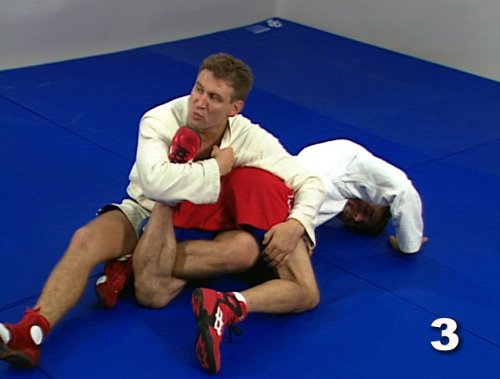
This move starts after both of you fell to the ground and are still fighting. In this scenario, you have the upper hand on your opponent, as he is on his fours (“turtle” defense), with you having control over his back, or kneeling on his side.
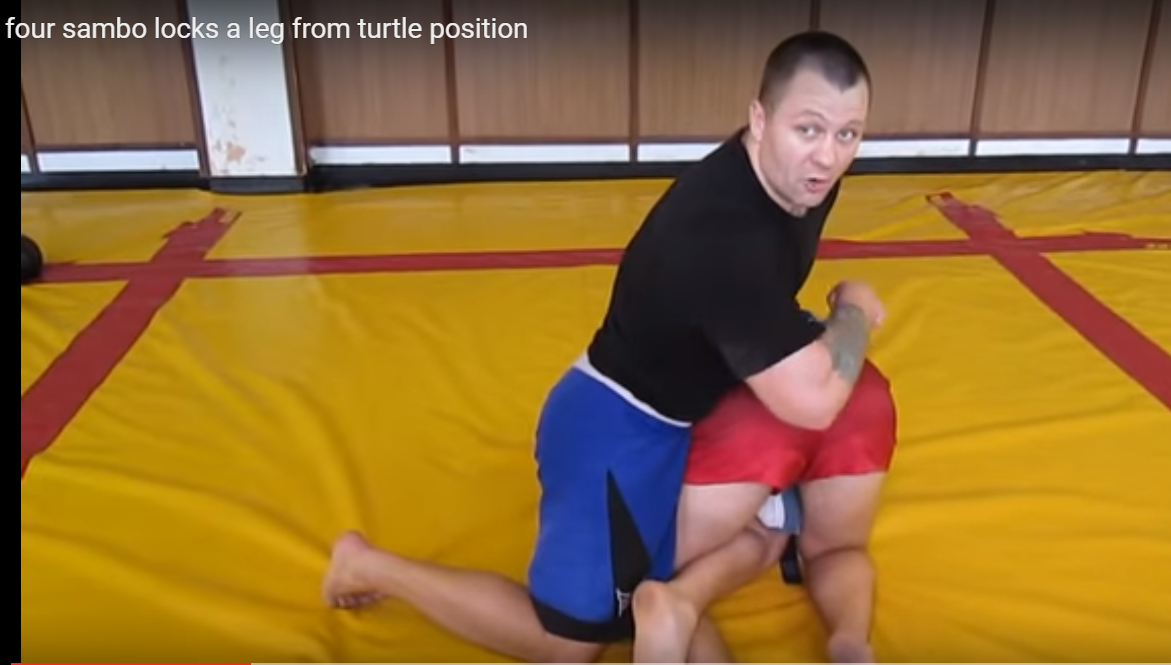
1. You need to rest your weight with both your hands on his back to keep balance. As you squat (more powerful) or kneel on your support leg, raise and bend your free leg towards the inside so you can hook it between the legs of your target
Your free leg should be parallel to the ground, like when you rest it on your other knee while sitting in a chair. Why not call this move the “Alpha Body Language Vine”?
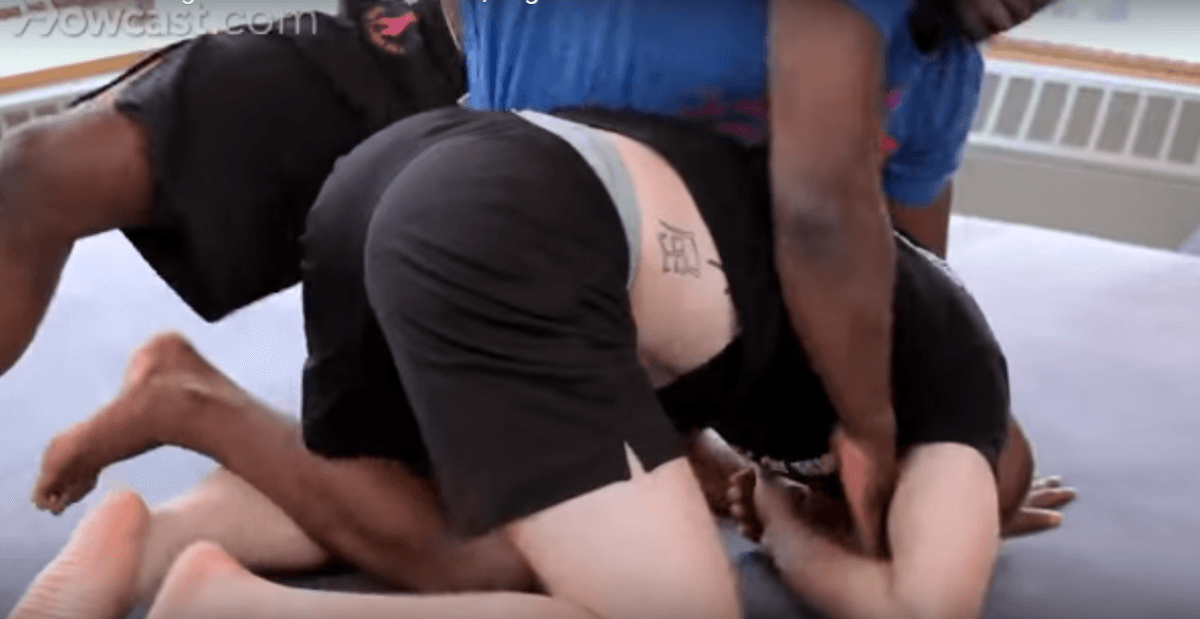
2. Pivot on your support leg while pushing your free leg in the popliteal fossa of the opponent until the back of your knee is in contact with his thigh. Exactly like a vine around a tree. You must remain stable and bent forward, not to collapse backwards.
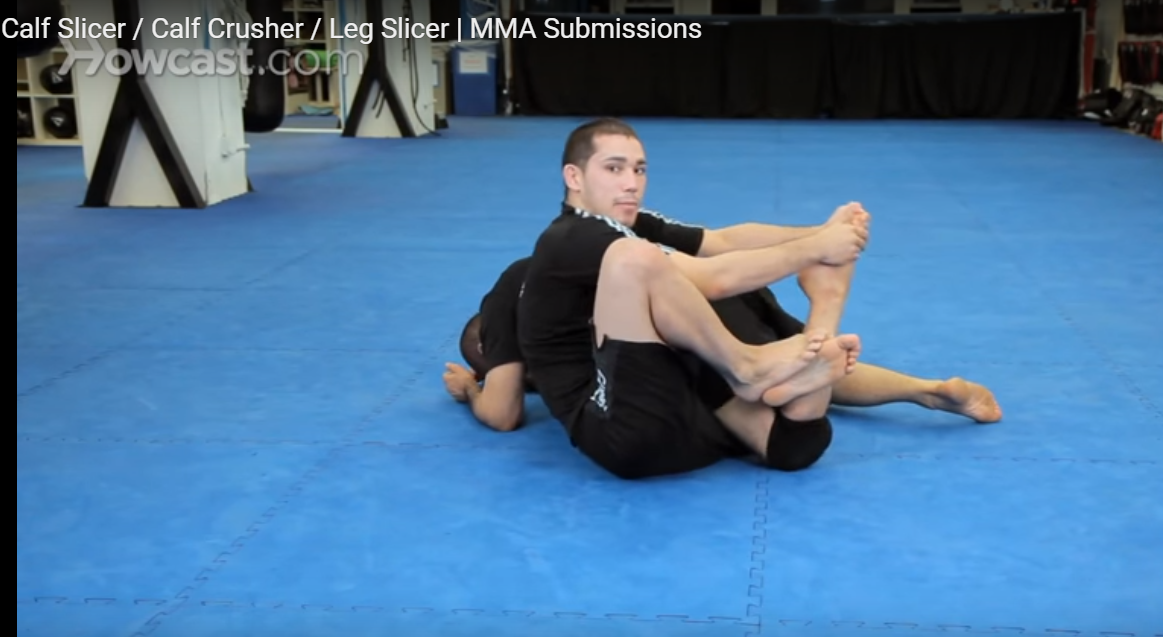
3. Bent slightly more to cup both of your hands around the front of his foot. You can then sit back and push him with your shoulder to flatten him on the ground and keep control with your bodyweight. As you pull, your tibia bone will press the muscle fibers of the calf, inflicting a great deal of pain. He will most likely tap out
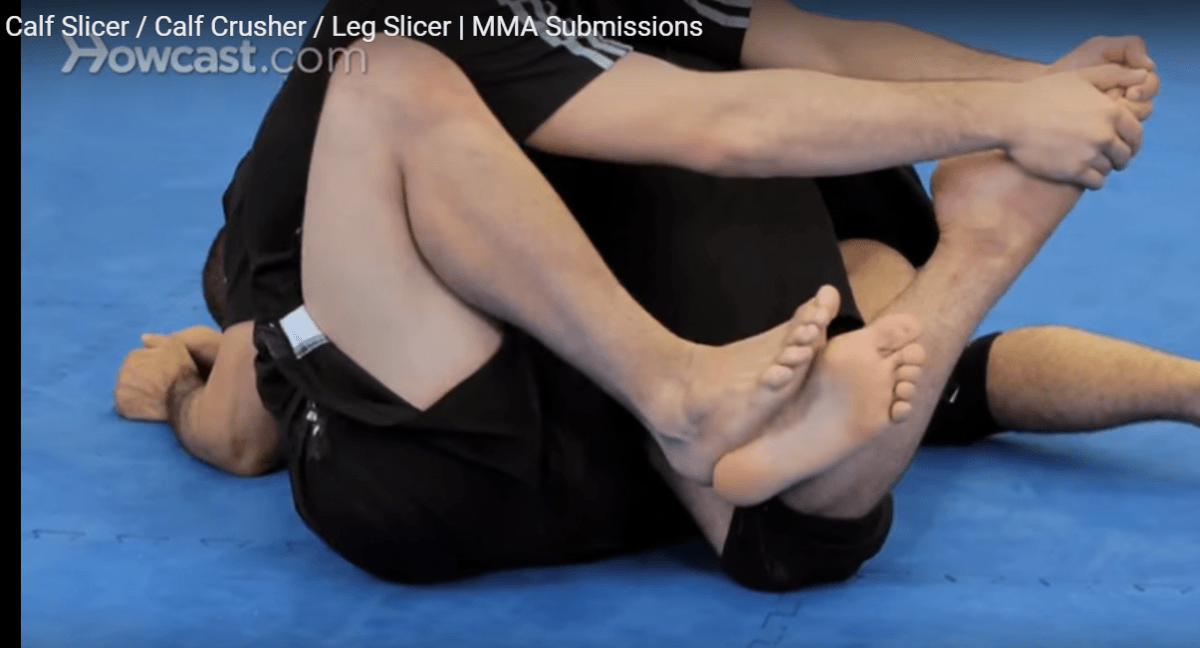
4. If this is not enough, you can put the sole of your free foot on your own heel and push, so the tibia drills deeper in the muscle, while you pull harder on his foot. If this is not enough, you can kick with force your heel BUT THIS IS LIKELY TO RESULT IN AN INJURY FOR YOUR OPPONENT.
This one takes quite a bit of practice, but is well worth it. Note that the bigger the legs of your adversary, the more painful it will be for him, as his muscle groups are larger.
The hematoma created would incapacitate him. It is important to keep the leg in line while you pull, to inflict pain on the muscle and not the articulation. The tension created on the kneecap if twisted, can damage the ligaments of his knee and the whole articulation.
I’ll let the boys of Human Weapon demonstrate (here, they used a rolling movement to conclude):
2. The Hon-Gesa-Gatame shoulder lock

This one is one of the most, if not the most, useful submission I know to make an opponent tap out. Useful because it starts from the Hon-gesa-gatame position. 70% of the time, two fighters in a standing clinch or trying to throw one another will end up in this position.
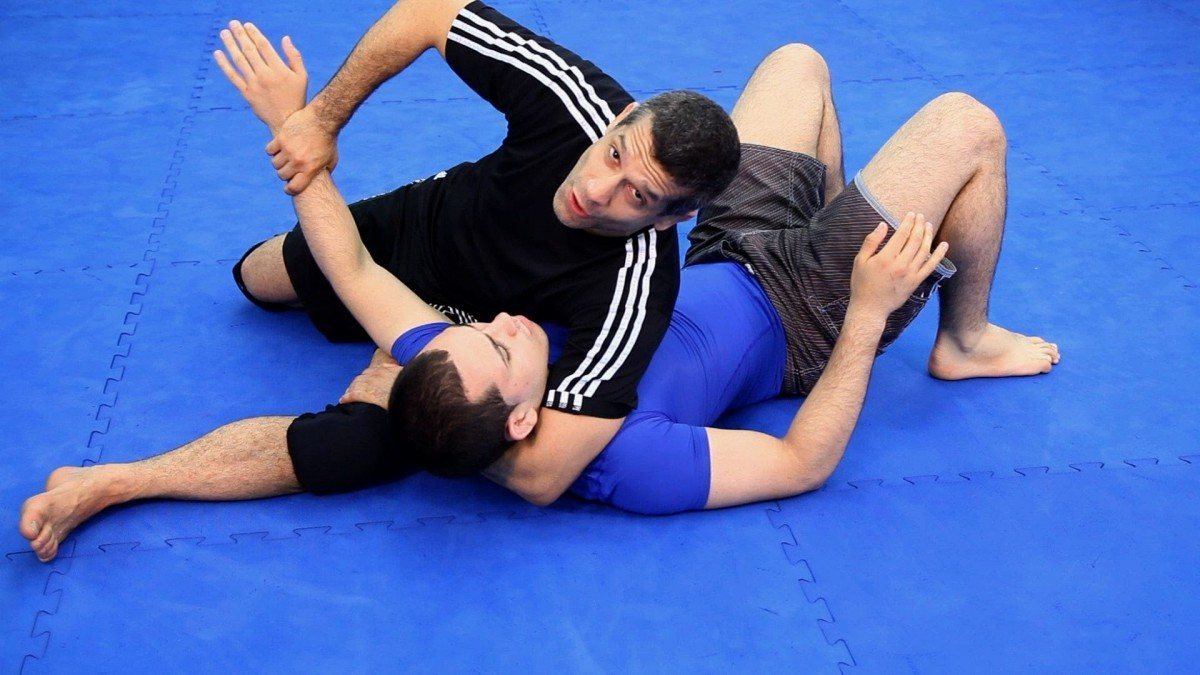
1. Both fighters are on the floor. You are on top of your opponent, pinning his weight on the floor with your ribcage. One hand controlling his neck and the other holding his wrist/arm. Your legs are ideally forming a right angle to control a maximum of surface

2. Using the leg closer to his head, you will raise it up towards the ceiling, in order to hook his forearm under your popliteal fossa, using your strength and the weight of the leg to keep his arm AT A RIGHT ANGLE. This needs to be practiced thoroughly to execute it fast, as he won’t wait there passively

3. The final step is to use a scissor-like motion, pulling down his wrist with one leg, while pushing his elbow upwards by thrusting your hips towards the ceiling. It creates pressure and pain both on the elbow and shoulder joint. If he does not tap out, you can also push (GRADUALLY) his shoulder towards the floor with your free hand.
In a non-competitive scenario, you can push his shoulder down while thrusting up with your hips in one movement. You can punch his shoulder down in last resort. WARNING: this is highly likely to create serious lesions on the elbow and shoulder ligaments.
3.The ankle lock (Achilles tendon compression)
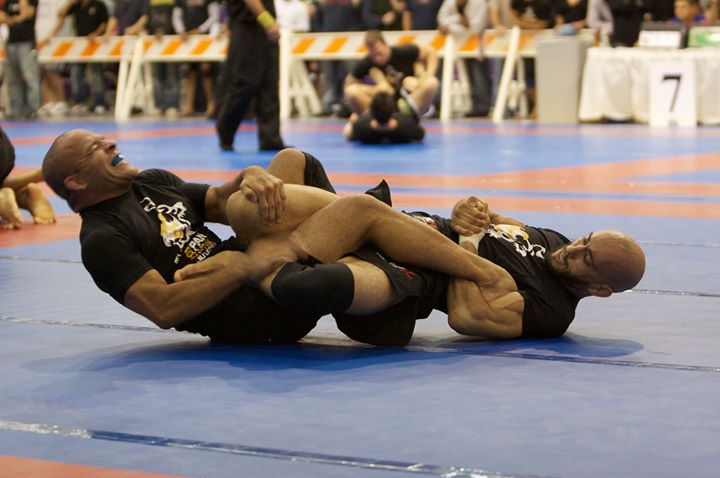
It is one of the pillar techniques of Russian sambo and is probably how 70% of the submission victories occur in the discipline. It is also popular in BJJ and MMA. It is a matter of skills, speed and mental as if you do it, your opponent has exactly the reverse set up to use it on you too.
The submission can be done while you stand (for example after you used the Thai sweep or the inside hook that we saw before, or while you are sitting, facing the opponent.
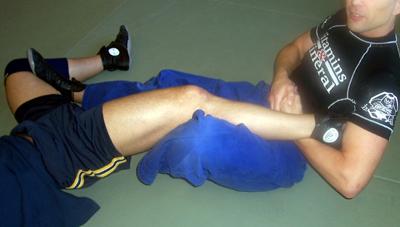
1. The key part of the submission starts with you, properly locking his ankle joint as high and as close as you can under your armpit, while keeping his leg straight, with his knee and toes pointing towards the sky, not in a diagonal. Your radius will be placed under his leg, at the spot where the Achilles tendon meets the root of the calf
2. You must clasp your elbow against your ribcage as tight as possible. Meanwhile, your leg (the closest to the one you hold) will remain outside his, to prevent him to scoot away, while your other leg, locked straight, will push the popliteal fossa of his other leg, to prevent him to reach forward to grab your lapel or punch you
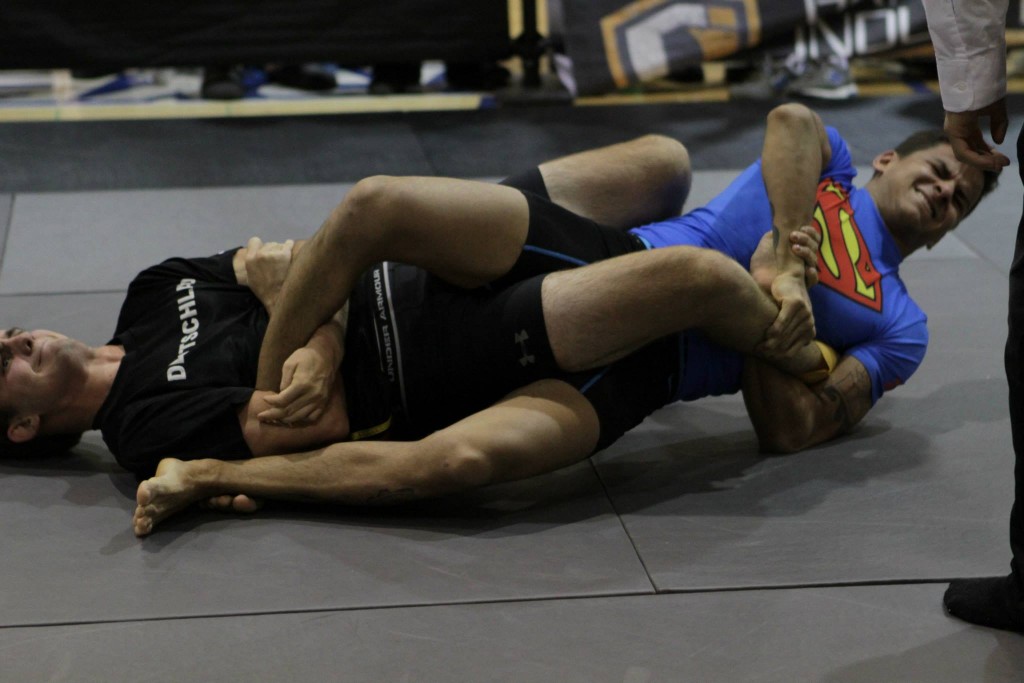
3. The final step is to lean backwards, while pulling his leg up. You can use a “sawing” movement with your radius on his tendon. It should be enough to inflict pain. However, I recommend to lift your hips towards the sky in order to maximise the leverage on his Achilles tendon
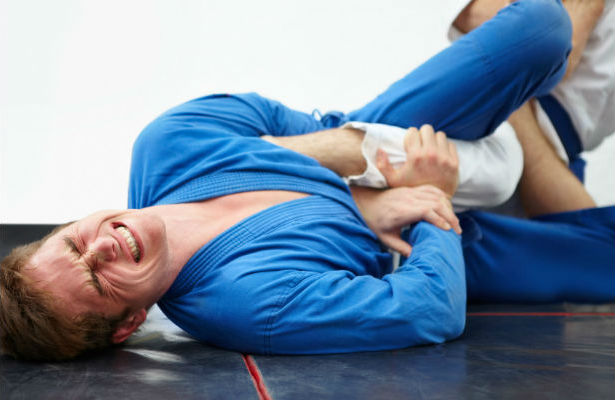
What NOT TO DO: Leg is not vertical. Hips are not raised. Dude’s spending is energy for nothing.
4. The rear naked choke
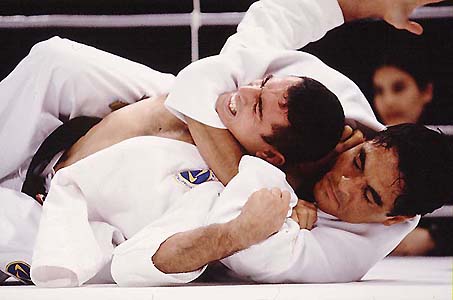
Also known as Hadaka-Jime or “mata leão” (the “lion killer,” as it is known in Brazil), it is the easiest, most useful choke and my favourite hands down. Who would not like the move that Hercules most likely used to slay the Nemean lion?
You need to practice this one with care and regularly, while controlling your strength and reading the signs that show that it is working. This choke is dangerous as it reduces the supply of oxygen to the brain.
Always used controlled practice under the supervision of a qualified teacher. Best way to learn: listen to what your partner and “guinea pig” is saying.
(Note: this choke hold can be used while both fighters stand and the same steps can be followed, with slight variations)
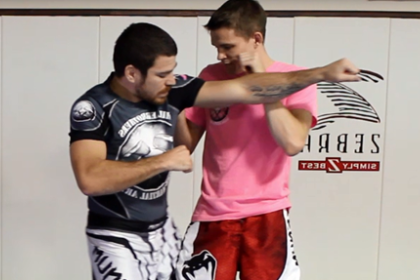
1. You find yourself on the side of your opponent (like the fighter in red shorts) after the two most likely scenarios: 1.He tried to punch while moving forward and you deflected his blow, knocking him off balance 2.You were in a clinch and while he pushed, you made way and dodged his force, while stepping towards his side
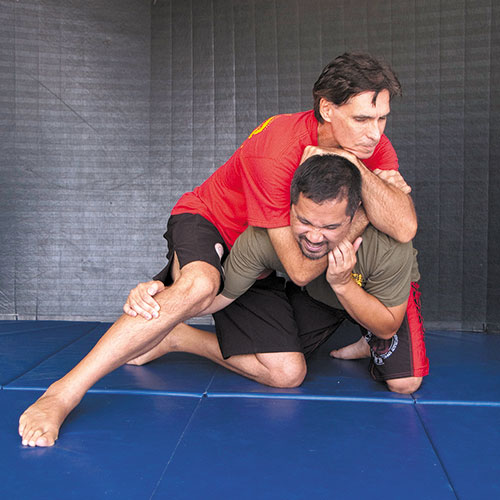
2.Get closer to your opponent immediately. Slide your arm under his chin, resting the inside of your elbow on his trachea. Get your hand (the one under his chin) flat on the inside of your other elbow. Rest the palm of your free hand flat on the occipital bone
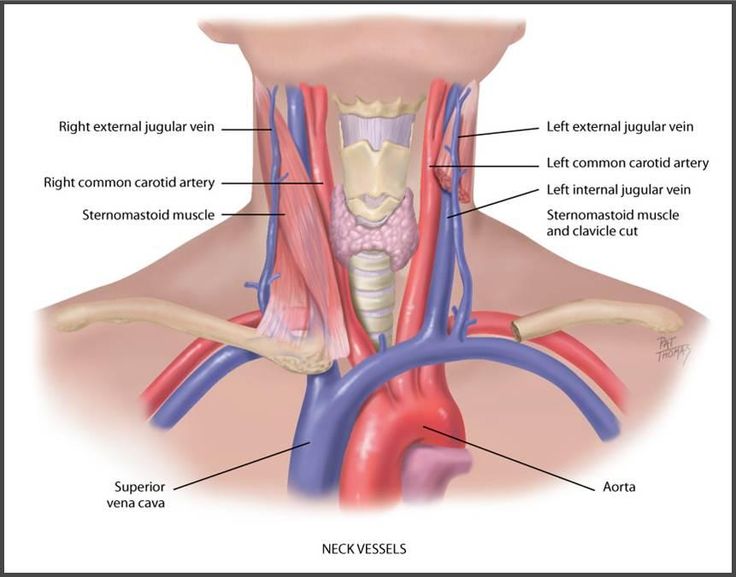
3. The choke (a blood strangulation) comes from three different points: 1. Squeezing your am to flex your forearm and biceps muscle, in order to apply pressure on his arteries. 2. Pushing his skull forward and down with your hand, to block his blood circulation and restrict his movements. 3. Pulling your body backwards to exercise greater pressure while his hips are still.
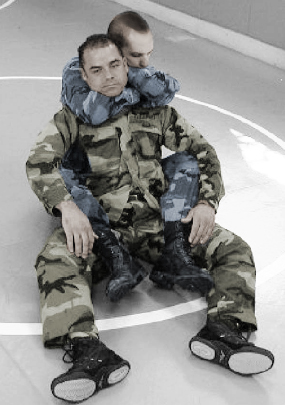
Figure of four
To limit his movements, you can execute a “figure of four” or lie on your back or on your side, to prevent him from having any point of contact with the ground.
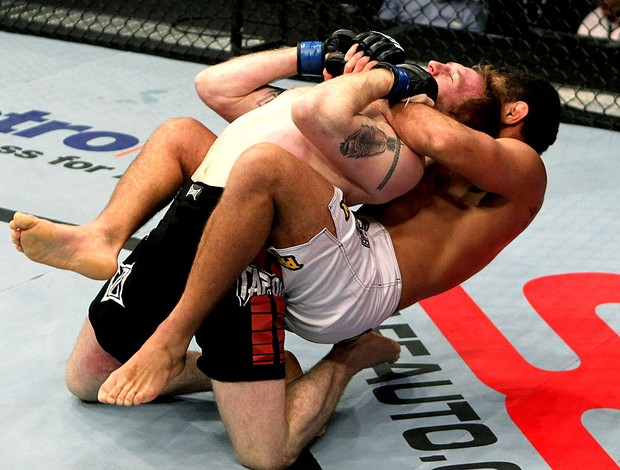
Your technique needs to be good and the practice must be done on different partners with different morphologies. Even is the choke is there, an opponent with experience and strong neck muscles will not be affected if your technique is not spot-on.
Un apprentissage sans fin
Those four dimensions are the foundation of martial arts but are not limited to those. Techniques and counter-techniques are thousands and variations are endless. But more than anything, it is practice, good guidance and dedication that makes an excellent fighter more than an endless repertoire of techniques.
After all, Bruce Lee was right when he said “I fear not the man who has practiced 10,000 kicks once but I fear the man who has practiced one kick 10,000 times.”
So go on. Put on some sports clothes and go hit the mat. Be serious, humble and attentive. But before anything else, have fun!
Until next time…
Read More: 4 Effective Leg Techniques That Every Fighter Must Know
For anyone wanting to do Hadaka Jime (rear-naked choke) make sure your elbow lines up with your victim’s chin. My senseis have often said to me that if those things aren’t lined up, you could potentially crush your opponent’s windpipe.
Still my favorite choke though.
Also, love these posts. As a martial artist myself, I find these a useful read for my spare time. Read up, boys.
Also be sure to use the blade of your forearm, not the wide flat part.
RNC never disapoints. Cheers lad. Keep punching.
The only one of these 4 I have experience with is the rear-naked choke. Ground grappling is admittedly, my weakest area. Wish I knew more guys around my area to train with.
I’m surrounded by McDojos. Tried them all out, but quickly learned that the fighting spirit is completely absent from all but a rare few.
What we really need are some unlicensed sparring rings. Set up some good mats in a large room and just roll/spar with like-minded guys.
I concur. Would be fun. Have it just like a public park where anyone can walk in, drop a couple bucks into a jar, and find someone to work with. We might be onto something here…
I’m 95% sure that’s how dojos got started in the first place.
I posted this below, but yeah. In the old days guys with different backgrounds/experience would meet up in a basement and work techniques and fight. A lot of good people came out of that and built the reputation that commercial martial arts is now riding on.
That would great, but I can see community organizers screaming about it. I join a dojo now and then to keep in practice, but mostly it’s worthless. I check the expectations and only kickbox, ok, nothing unexpected or heavy. But man, so many times I’ll start sparring and the other guy is like, “Hey, hey. You just HIT me!” And those are blackbelts.
Ah, there must be some guys around. Any BJJ/MMA/Sambo place near you?
I enjoy these articles. I never look for fights, but it’s always good to learn new ways to finish them if I’m in one.
Nothing beats practice. Reading is good, muscle memory and training are better
I think that some of these holds may be a bit difficult to pull off in a street fight though. Other than the rnc. Good article though
Agreed.
There are just too many variables, outside of a competitive setting (since most of those have limitations on what is allowable in turn, for instance they won’t let you strike the throat or gouge eyes in retaliation to the shoulder lock, etc.), it’s rarely ever a good idea to be in that close proximity in a real combat situation, on the ground especially since that impairs your own mobility and angles.
But maybe he will follow-up in the future with counters to the moves in his first four articles for those who may sometime encounter them.
right, like while you are setting up your Achilles tendon pull his buddy might kick you in the face with steel toe boots. lol
Still, as far as competitive martial arts go, kind of a cool description of the holds.
The way I view techniques is that they are just like tools in a tool chest. I might never use that wrench over there, but I have it in case I need it. Same thing here. I might never plan to use the calf crusher in a fight, but in the chaos of everything I could very well find myself in a position where I go “Ooh! Calf crusher!”
How could someone gouge your eyes if you sink in a shoulder lock from either top or bottom? I suppose anything is possible. But you’d basically have to just sit there and let them do it, while they ignore the fact that their arm is getting broken.
http://www.grapplearts.com/wp-content/uploads/2012/09/Kimura-from-Guard.png
http://bjjinternational.com/wp-content/uploads/2014/09/Americana-from-mount.png
http://www.phase3.biz/core/uploads/JJP/photos/crosssidenogi-kb-kimura.jpg
Difference in competition versus combat. I’ve seen people dislocate their own shoulder in such situations. I’ve personally let a few fingers be broken to get out of a bad (lethal) situation, not something I would ever advocate doing, but out of options at the time.
Obviously an eye gouge wouldn’t always be possible depending on position (and good you pointed that out), but it is forbidden in competition, and it’s not forbidden in a real fight.
Knowing techniques is always good, but it’s best to never seek to be in a ground situation outside of competition, the attacker is not limited in the same ways and it limits your own mobility.
I wouldn’t be able to pull off the first three either, not even in sparring.
The rear naked choke is spot on. I would add the guillotine choke. And the triangle as a last line of defense to get you out of one of the most fucked up positions you can find yourself in.
Thanks for the great article. Thoughts?
I like the guillotine choke for one additional reason beyond the obvious fact that I’ve probably won at that point, heh.
If you manage to get a standing guillotine choke, what your opponent will probably try to do is take you to the ground in an attempt to escape. All you need to do is pull his head deeper into the choke and fall backwards onto the ground. Don’t worry, his head will break your fall.
You’re mean! I like it! lol
What is your opponent but some extra padding when you fall…
I pulled off the calf slicer about 10 years ago with some green guys on the mat. But, they were very green and we we’re just rolling very lightly just kinda having fun. I agree with the triangle/arm bar out of desperation when on your back too
A good tech on the ground when on your back and the opponent mounted (in a non-competitive confrontation)would be to slap his ear flat.
Guillotine is #1 against untrained attackers (they put the head down on any charge). RNC is probably #2. After that, I can maybe pull off the Americana and Kimura if I find myself on the ground with them, but it’s way more risky than ground-and-pound.
In a street fight, I’d focus on throws, locks, and basic chokes. Anything with a high effectiveness-to-skill focus.
I’d be much more worried about breaking the bones in my hands from throwing punches without gloves and possibly on concrete then not being able to sink in an americana or kimura. I can sink in armlocks from the top regularly on trained sparring partners. Doing so on an untrained opponent is like taking candy from a baby.
Guillotine and kimura would definitely be 5 and 6 if the article was not limited to 4 techniques
Always do mental shadow punching with techniques. Imagine using it in a real situation and work with it. Throwing a bad technique, or throwing a technique badly, is worse than not even having a technique. You get to fumbling and lose control of the situation and the other guy pummels you.
I’ve pulled off #1 from bottom, and #2 & #3 a handful of times while rolling. But I doubt they’re anyone’s bread and butter. There are plenty of other choices the: guillotine, kimura, triangle, and armbar. They’re all important fundamental submissions regularly pulled off at all skill levels and from many positions. The author of course included the RNC and the americana. But he showed the americana from an unorthodox position that usually results in a much lower percentage finish.
Generally fighting in the street is not like a sport fight where the combatants agree to the rules and such. That is HONORABLE combat.
I’ve approached a few street situations where I was in that mindset and I had a beer bottle broken over my head from behind and on another occasion I was sucker punched which fractured my eye orbital.
All those submissions are good if the fight is 1v1 or the rear naked can be good if you have your back to a wall. Otherwise I never want to be on the ground if I can prevent it in the street.
If I do hit the ground and I’m gettin hurt bad on my back, or outnumbered I got mr speed safe Kershaw for that.
Now I will play extremely unfair in the street. I will do WHATEVER IT FUCKING TAKES to win, even if that means using your whore of a gf as a human shield when you pull a weapon out. I’ll let you stab her up then take your punk ass out.
I prefer to be mobile and BEAT on them mercilessly. It also causes a more visceral psychological trauma to the shrieking banshees who are watching.
I will not stop until every bitch ass morherfucker who even THOUGHT about doin somethin is not moving or cowering like a bitch on the ground begging for mercy.
If u do this just be careful about ppl with cameras and make sure to get the fuck outta there when the threat is over.
Damn. So. . . You’re kinda like that too? I’m really mild mannered and shit. You can hit my car and I’ll be really understanding and not be pissed off. But in situation where someone’s bullying I lose control. Like, recently an insurance adjuster came to my house. I’d been abused by a company, it’s employees, and lots of situational shit, ok, but I’m just like being stoic about it and going on. So this piece of shit comes to my house and the questions he’s asking are obviously to fish for any information to be used against me. He’s even investigated me back to the 1990’s. But hey, I’m being cool and patient. But that just seemed to make him think he was controlling things and could start mouthing off. So first I told him to get the fuck out of my house. So he’s like not going to leave. So I had the pleasure of physically dragging him off the couch by his shoulders and onto the floor, and then throwing him over the front porch and onto the lawn. Then after smashing his tape recorder, emptying his briefcase into the wind. He called the cops, and I made up a bullshit story about his fondling himself and shit. No problem. . .My claim was denied, but it’s not hurt me finanancially so I don’t give a shit.
Lol. That’s hilarious. Glad you got aggressive with some dipshit you didn’t want in your house.
That must have been a satisfying feeling
Oh dude, it was great. Mentally I’d already washed my hands of the company and all the bullshit, and he just happened to push it over the edge. Later I treated myself to a nice meal and went to the titty bar.
Oh yeah. It felt GREAT! And I’m not a violent person. But wow. . .
Agreed. The one exception being the choke. Pretty straight foreword and most people don’t do it right. Understanding the goal is to clamp off blood to the brain… not to close the airway. Clamping the carotids and making the lights go out can take only seconds and will keep you out of prison. Clamping the airway takes minutes and will leave you as a defendant for 2nd degree murder charges.
Ground combat isn’t about arm locks and all that shit. It’s about hips. Control theirs… and free yours. The hips are where your power comes from. So learn that concept before you go attempting any crazy locks. The problem with a lot of these holds is that if you lose them… you’re completely exposed and completely fucked. Things like that work well in matches where there’s a ref and losing a hold won’t end in your death. On the street they’re just too risky.
Good rule of thumb to remember in rnc: forearm to trachea, biceps to oxygen. One passively cuts of oxygen to brain, other snaps the esophagus.
Wait? No Figure 4 Leg Lock?
#2, as it is shown, is false confidence.
It’ll work on the mat, but if anyone ever uses it on me for real, I’ll have my shoulder pulled out of its socket and ligaments messed up, while he, at the minimum, loses an eye
Besides this, any fool preparing for the ground 1on1 is bound to have his head smashed by the friends of the guy he’s putting into submission.
Go train on something real, that is not just good on a mat that doesn’t make you bleed the moment you rub your legs on it, and one that doesn’t assume there is a referee to say “now it begins”
What discipline do you train, pray tell?
Krav Maga.
Granted, no technique is the be-all end-all one, but
it
– provides a real perspective of what is likely to happen, i.e.: that your attackers will be bigger and stronger than you, and in greater numbers
– emphasizes staying on your feet and in balance with every strike/movement
– makes no assumptions as to how and when a fight begins, and whether it ends when you think it ends
– assumes that others who were not in the fight in the beginning may join in, emphasizing visual awareness
– assumes that your attackers can produce weapons at any given time during the fight
– assumes that unless you eliminate the situation quickly, those may be your last moments
Given those, if you go to the ground, that may be the last time ever.
And if you are committed to dealing with one individual, you are both unaware of, and are in danger from the others around you.
I sound pedantic, and since you are obviously a martial artist yourself, you already got the idea.
My objection was not to the effectiveness of your techniques, because one on one, they are superb.
It was to the assumption that it was going to be one on one all throughout the encounter, and with individuals who are not going to be, say, carrying shivs they can produce and stab you in the femoral while you are splitting their joints.
No article can replace actual training. Anyone who says they can teach how to street fight is unrealistic.
If you have side control as in the first two examples, why not just mount the dude and pound the living shit out him? Keep it simple stupid.
What did you miss in the “4 effective ground submissions…” title, boy?
I have little training in ground fighting arts, basically some BJJ and Judo.
My favorite ground submissions are Kimura (for some reason I found it very easy to do) and the rear naked choke.
Kimura would defo be number 5 on that list. The issue is that it occurs in a position where usually the opponents have been struggling for some time on the floor.
No offense to the author did not bother to read the article not cause I cants read , but just by looking at the pictures of this article I can tell , this is not the kind of shit I would do in the streets . Yes these guys are fit athletes but this stuff is sport oriented .
The article is not called “4 ground submissions that will guarantee you 100% survival against 15 opponents”. Be realistic and read.
Again much respect JB I’ve enjoyed your past articles . I haven’t figured out how to upload YouTube vids on ROK yet , But do yourself a favor and check out fort myers kuntao , and you’ll get were I’m coming from . Just recently took a seminar in philli with these guys and they know their stuff !
R.o.k has to get a little more red pill when it comes to self offense advice . Women , lifestyle , business self improvement your covered . But when it come to topics like this you can’t bull shit me . Luv ya though r.o.k
Fighting skills and fitness are mostly experiential. So much is dependent on the individual’s psychology and physical states that pat lessons are useless. And the individual really needs to get into a good school with people who’ll provide a range of stuff that he can work out and make his own. In the old days guys with different martial experiences would meet in a basement and work things out, each developing almost a new style. Today’s people kinda don’t have that mentality, so you have schools that teach standard stuff that may or may NOT work. Also, people who teach rarely have much actual, real-world violent experiences. They got to where they are being in a gym all day and working a side job. Our sensei recommended we bounce at bars and join the military to round out our class material.
RNC = GOAT. If not that, easily the ankle lock.
I love most of the ROK articles, but these self defense articles are getting worse each time. First high kicks then dumb submissions, neglecting all of the most important stuff when it comes to real self defense and just showing these techniques. The only one i’d use (and have) is rear naked choke, but standing up.
These articles seem to me written by somebody who has done martial arts but never actually had any real life experience fighting. And by that I don’t mean in competition.
Did you just upvote your own comment, Rambo?
Why are you sending me pictures of yourself? Is the next article “4 improvised weapons?”.. keyboards, bananas, dildos, can of dogfood.
Good comment Ben.. upvoted!
I agree!
So do I!
A lot of these moves are fairy tale moves with the exception of the rear-naked choke and ankle lock. Here are the 4 effective submissions every man must know (trust me, I’m a black belt in Brazilian Jiu-Jitsu):
1. Rear Naked Choke
2. Arm bar
3. Triangle Choke (You will most probably end up on your back in a fight against a larger opponent. Every non grappler falls victim to a triangle choke. Goodnight.)
4. Heel hook (Once you dislocate their knee, they can’t walk or chase after you).
Excluding the rear naked choke the others are useless into a street fight, also forget about using grappling into a fight whith several opponents.
I agree. I have the impression the author was more concerned with demonstrating his knowledge of submissions than offering practical advice. Don’t be too quick to dismiss grappling against multiple opponents though. It’s great for hostage taking. It’s amazing how the dynamics of a group attack can change when the attackers think their mate is about to have his neck broken.
Great advice from Lee – Fear the man who’s practiced the same kick 10,000 times. What we learned in Kempo was that yeah, you learn dozens if not hundreds of techniques, but as you progress in rank you find just a few that you make your own and work them into all different situations. All the other techniques are then geared toward you getting to using your pet techniques.
+1 a handful of very sharp tools is better than a bunch of blunt ones.
I’m not sure if I mentioned this before on the prior installments of this series of articles; while I am not a fan or practitioner of bjj, Hener Gracie’s branch of bjj is some of the most practical and objective disciplines. Partly because he does not teach mma or competitive bjj as much as he teaches self defense, ministry cqc and LEO engagement, with weapons and without. His methodology to many of the moves listed above has convinced me of the effextiveness in adaptability in both competitive honorable circuits or a street fight. In short, it’s all about methodology. Don’t be the sport submission grappler who gets into a fight and has the mindset of just “tapping out” an opponent when said opponent might necessarily tap or stop after injury. He may be carrying weapons, etc.
Not to be a hater. But you had to pick 4 submissions that you think are crucial on the ground, and two of them are the calf crusher and ankle lock? There are plenty of higher percentage foundational submissions to show a beginner.
Was tempted with the guillotine and kimura to make it 6, but i stick to 4. Triangle choke is good to demonstrate live, as they are many subtleties. Writing about it step by step can be confusing.
Thanks. I personally prefer to use guns for self-defense, though
You went for obscurity over practicality. There is a reason you don’t see most of these in pro MMA bouts.
in a real fight where eye gauging, biting and small digit manipulation is not against the rules many of these submission holds are an after thought.
E.G if you can get a hold of someones arm/hand why wouldn’t you just BREAK THEIR FINGERS!! That said i’d prefer chokes in general, Triangle, guillotine, RNC etc but one would need to be well trained in striking to deal with multiple attackers.
In my experience chokes are more likely to be effective on people with greater physical strength or technical fighting ability than yourself. In my limited grappling experience, i have never been put in an armbar by someone who wasn’t significantly stronger or had much greater experience or ability than myself. If you watch MMA at the highest level armbars are nearly unheard of….it requires an unrealistic level of grappling dominance by one of the competitors in a grappling situation between two physically even, high level competitors, or a moment of extreme carelessness/recklessness by one of the fighters.
Honnestly, in real life situations, if you are attaked and going to the ground and are close enough to strangle him or arm lock him, don’t do that.
Gouge his eyes.
To summerize it:
– Don’t go to the ground. Don’t let people drag you to the ground. Run. Move. Fight back. Learn to fall and to stand in in instant;
– You HAVE to master at least a few ground techniques, because you won’t choose to go to the ground, or it could be the only viable option (ex: to jump on a man that is goinf to shiv your son).
(Ex; you lost your balance on the other guy fall on you)
=> The only good thing with ground fighting is that technique make it reltively easy to Triumph over a stronger/more massive opponent, but i won’t advocate it BECAUSE HIS FRIENDS ARE GOING TO STAB OR STUMP YOU.
=> By the way, the only moment while i’d eventually advice to kick an opponent is when you stand from the ground before him.